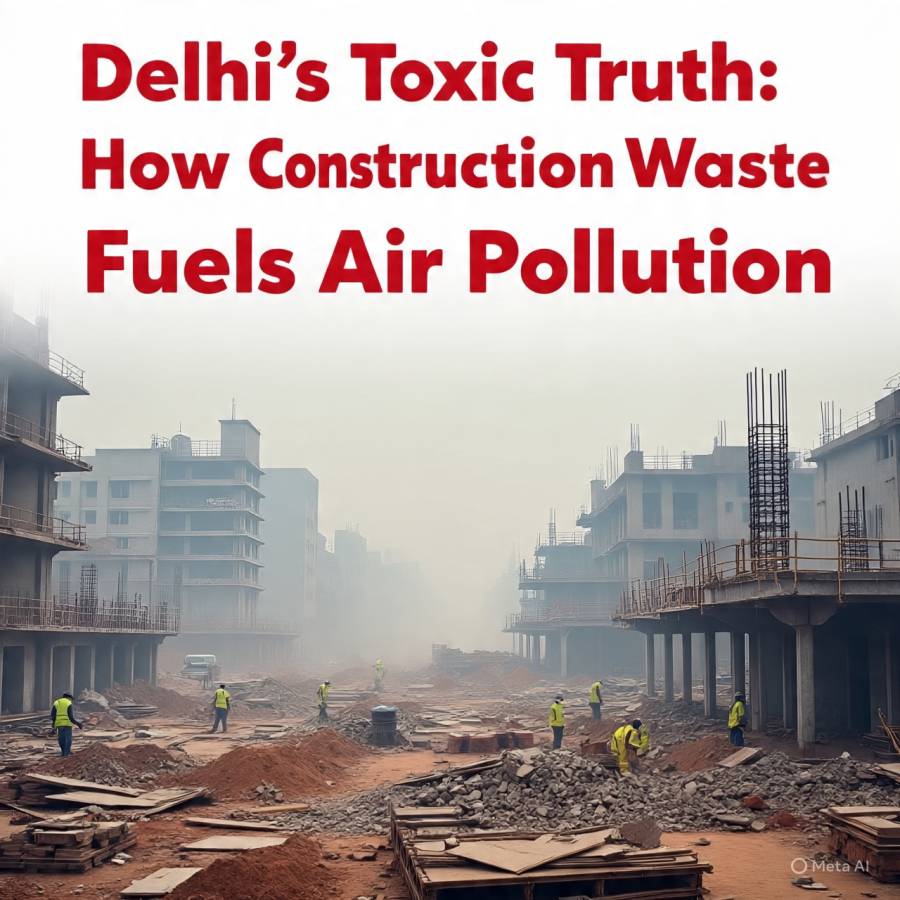
As Delhi grapples with its annual struggle for breathable air, often forcing the capital into emergency measures and spurring citizen protests at sites like India Gate, a recent internal report from the Municipal Corporation of Delhi (MCD) has laid bare a critical, yet often overlooked, systemic failure. The findings are alarming: nearly half of the city's official Construction and Demolition (C&D) waste collection points are operating without essential dust mitigation infrastructure. This inadequacy turns the very sites designated to control pollution into contributors, directly fueling the dense cloud of particulate matter that suffocates the national capital.
Infrastructure Failure: A Breach of Trust
The report serves as a scathing indictment of the city’s environmental management practices. While the capital has mandates requiring dust control at construction sites including the use of anti-smog guns, water sprinkling, and protective sheeting—it seems the municipal body itself has fallen short of its own standards. According to the data, a substantial number of the official C&D collection points, meant to be secure, interim storage facilities, are not fully equipped with basic measures like high blue mesh screens or water sprinkling systems.
C&D dust is a primary driver of PM10 pollution, the coarse particulate matter that penetrates deep into the lungs. By neglecting to fully outfit these designated sites, the city's machinery is essentially creating open, regulated reservoirs of dust, allowing fine particles to be carried across neighbourhoods by wind and vehicle movement. This lack of infrastructural integrity undermines the entire spirit of pollution control efforts. When the system designed to contain the pollution is itself porous, the city's fight against toxic air is fundamentally compromised.
The Arithmetic of Debris and a Systemic Deficit
The challenge is compounded by the sheer volume of debris generated in a constantly expanding metropolis like Delhi. The city produces an estimated 6,000 tonnes of C&D waste daily. Against this massive inflow, Delhi's existing processing facilities—spread across plants like Burari and Shastri Park—have a combined capacity of only about 5,000 tonnes per day (TPD). This leaves a significant gap, peaking at 2,000 TPD, which the collection mechanism must absorb.
This processing deficit creates a powerful economic incentive for illegal dumping. Weak enforcement and the high cost of transportation encourage unscrupulous contractors to bypass the official, legitimate collection points, opting instead to abandon tonnes of debris along arterial roads, in vacant plots, or near residential areas. The consequence is two-fold: not only does this create unauthorized dumps that exacerbate dust and groundwater pollution, but it also indicates a failure of the surveillance mechanism. As one official noted, despite the presence of numerous CCTV cameras and regulatory checks, the sight of trucks illegally offloading construction rubble remains distressingly common, suggesting a critical gap in both awareness and accountability.
A Blueprint for Progress, But the Clock is Ticking
Amidst the grim assessment, the MCD has outlined corrective measures. The plan includes scaling up the number of C&D collection sites from the existing 106 to a significantly higher number—250 points—with 19 new sites already identified. This increase is crucial for creating more accessible and legitimate disposal avenues for contractors. Furthermore, the MCD is working to bolster its processing capacity with a key project: a 1,000 TPD plant set up at the Okhla reclamation site. While this addition is essential to close the generation-to-processing gap, its projected commissioning date of December 2026 highlights the painful reality that full remediation remains years away.
A more immediate win, however, lies in promoting a circular economy. The mandatory push for using recycled C&D products is showing tangible results. The uptake of these recycled materials has successfully offset hundreds of thousands of tonnes of fresh construction burden, saving valuable landfill space and reducing the need for raw materials.
Action Must Match Urgency
The city is at a critical juncture. The MCD's report is not just a statistical summary; it is a clear operational roadmap for saving Delhi from its own dust. The focus must immediately shift from planning to execution. While the long-term goal of expanded processing capacity is necessary, the immediate crisis demands that the existing 106 collection sites be fully equipped and operationalized with mandatory dust control equipment now.
The citizens of Delhi are not protesting hypothetical threats; they are protesting a toxic reality caused by systemic negligence. Until the local authorities treat every ton of C&D waste as a threat to public health and every collection point as a vital component of the city’s life support system, the annual spectacle of smog and suffering will tragically continue. Closing the infrastructure gap is not an administrative formality. It is a non-negotiable step toward a breathable future for the capital.




















